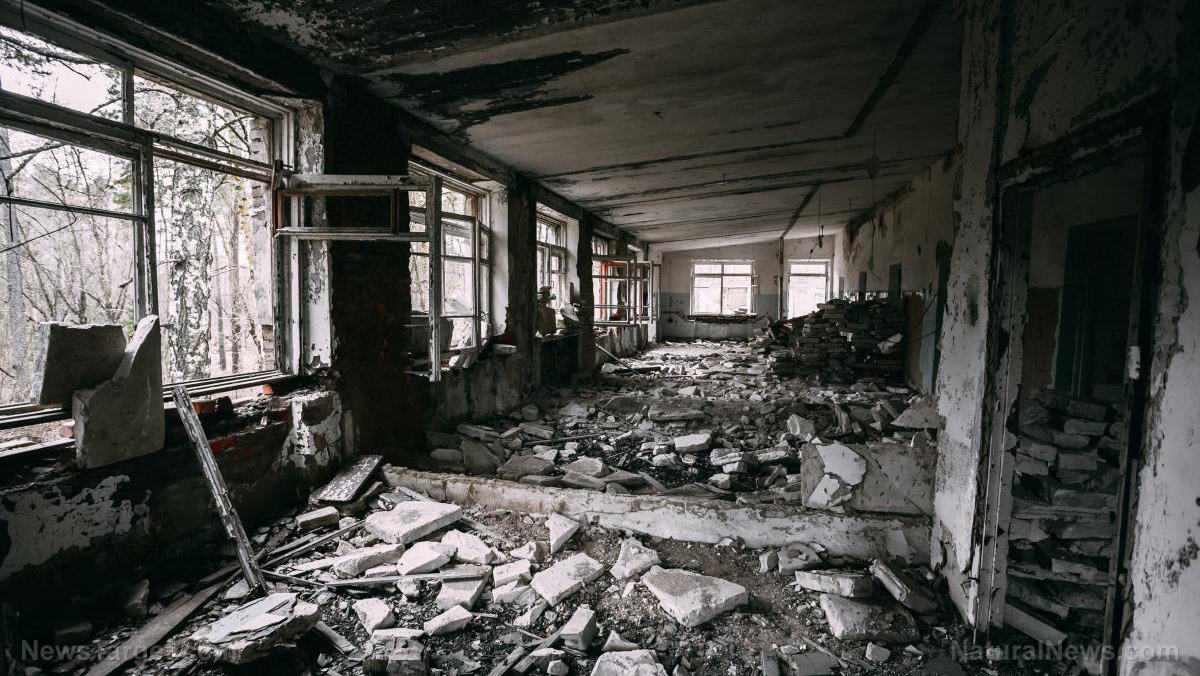Human workers forced to work in highly radioactive area to topple dangerous Fukushima exhaust stack
12/29/2019 / By Tracey Watson

Back in March of 2011, the province of Fukushima, Japan, was struck by a series of devastating events that culminated in one of the worst nuclear disasters in history. The area was hit first by a massive earthquake, and then by a 15-metre (50-foot) tsunami. That massive tsunami, in turn, disabled the power supply and cooling functions at the Daiichi nuclear power plant, which finally triggered a nuclear accident on the 11th of March that was rated a 7 on the INES scale. Four nuclear reactors were destroyed, and clean-up work has been ongoing ever since.
Experts estimate that the task of decommissioning the plant and cleaning up the site will take upwards of four decades and cost billions of yen to complete.
In August of this year, news agencies reported that work had commenced at the plant to dismantle a highly contaminated, unstable exhaust stack. Before the disaster, the 110m (360 foot) high exhaust stack was used for the No. 1 and 2 reactors, and dismantling it is seen as a crucial part of the decommissioning work.
The Tokyo Electric Power Company (TEPCO), responsible for getting the cleanup work done, decided that the dismantling work would have to be done via crane and remote control because of the incredibly high levels of radiation surrounding the stack. Even at the base of the stack radiation levels have been deemed to be too high for humans to work in.
Then, on December 3, Japanese newspapers began reporting that people had nonetheless been sent up to the top of the exhaust stack to cut the cylinder body with power tools, after the cutting device used to cut the cylinder via remote control had become unstable and emergency action had to be taken. (Related: Fukushima — Storage tanks are full, radioactive waste to be dumped straight into the ocean.)
Workers exposed to extremely high levels of radiation
As reported by Strange Sounds, after the robotic remote-controlled equipment failed, humans had to be sent in to assist with cutting the cylinder body:
Some weird stuff is happening at the TEPCO’s Fukushima Daiichi Nuclear Power Plant right now. While Japan has decided to drop radioactive water in the ocean, Tepco sent humans to repair where robots failed. …
The workers at the top of 110-m high Fukushima Dai-ichi vent stack were exposed to an estimated 810 ?Sv, making this action an emergency response.
This, despite the fact that officials had assured workers and the public that radiation levels would not exceed 300 ?Sv. (Related: Is Fukushima radiation affecting the West Coast? Consider these signs.)
According to Japanese sources, work initially commenced late in the afternoon of the 3rd, when three workers were lifted by crane to the cutting device located at the top of the cylinder. The workers were busy for around three hours, all the while wearing protective masks to cover their faces. Work had to be suspended in the evening over concerns about strong winds that had come up.
The following morning, another three workers climbed up to the cutting device where they refueled the generator. Within 4.5 hours, exposure levels had increased to 0.47 mSv.
TEPCO plans to cut the cylinder body of the exhaust pipe into sections of between 2 and 4 meters at a time, and estimates that its size will have halved by March 2020.
Since TEPCO officials were initially adamant that humans should not be involved in this work at all because of the dangerously high radiation levels involved, it can only be hoped that the robotic equipment will not fail again before the project is completed. Stay abreast of the latest developments at Fukushima.news.
Sources for this article include:
Tagged Under: dangerous toxins, environ, environment, Fukushima, Fukushima cleanup, nuclear accidents, nuclear power, radiation, radiation exposure
RECENT NEWS & ARTICLES
COPYRIGHT © 2017 RADIATION NEWS



















